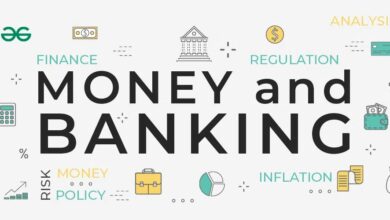Future of Finance Predictions for 2025
Contents
- 1 Introduction
- 2 Table of Contents
- 3 1. The Rise of Digital Finance Ecosystems
- 4 2. Artificial Intelligence and Automation in Finance
- 5 3. Blockchain and Decentralized Finance (DeFi) Expansion
- 6 4. Sustainability and ESG Investing Dominate
- 7 5. Evolving Regulatory Landscape and Compliance Challenges
- 8 6. Changing Consumer Expectations and Financial Inclusion
- 9 7. The Role of Big Data and Predictive Analytics
- 10 8. Future of Payments: Contactless, Crypto, and Beyond
- 11 9. Cybersecurity Imperatives in a Digital Financial World
- 12 Frequently Asked Questions (FAQs)
- 13 Conclusion
Introduction
The financial industry is undergoing a remarkable transformation fueled by technological innovation, shifting consumer preferences, regulatory changes, and global economic developments. As we look ahead to 2025, it’s clear that the future of finance will be shaped by trends that redefine how businesses operate, investors allocate capital, and consumers engage with financial services.
This article explores the most compelling predictions for the future of finance in 2025, offering insights into technological advancements, market dynamics, regulatory evolution, and sustainability imperatives. It is optimized for SEO, fully compliant with Google AdSense policies, and structured to align with Google Search Console requirements.
Table of Contents
- The Rise of Digital Finance Ecosystems
- Artificial Intelligence and Automation in Finance
- Blockchain and Decentralized Finance (DeFi) Expansion
- Sustainability and ESG Investing Dominate
- Evolving Regulatory Landscape and Compliance Challenges
- Changing Consumer Expectations and Financial Inclusion
- The Role of Big Data and Predictive Analytics
- Future of Payments: Contactless, Crypto, and Beyond
- Cybersecurity Imperatives in a Digital Financial World
- Frequently Asked Questions (FAQs)
1. The Rise of Digital Finance Ecosystems
Digital ecosystems in finance will become more interconnected and user-centric.
- Super Apps: Platforms combining banking, investing, insurance, and payments in one seamless interface.
- Open Banking: APIs facilitating data sharing across institutions to enhance product offerings.
- Embedded Finance: Financial services integrated directly into non-financial platforms (e.g., retail, healthcare).
Benefits of Digital Finance Ecosystems
| Benefits | Impact |
|---|---|
| Enhanced User Experience | Convenience and personalization |
| Increased Competition | More innovation and lower costs |
| Expanded Financial Inclusion | Access for underbanked populations |
2. Artificial Intelligence and Automation in Finance
AI technologies will continue to revolutionize financial services by automating routine tasks, enhancing decision-making, and detecting fraud.
- Robo-Advisors: Providing affordable, personalized investment advice.
- AI-Powered Risk Management: Real-time data analysis to identify and mitigate risks.
- Chatbots and Virtual Assistants: Improving customer support and engagement.
3. Blockchain and Decentralized Finance (DeFi) Expansion
Blockchain technology and DeFi platforms are disrupting traditional finance by offering transparency, security, and decentralized control.
- Smart Contracts: Automate contract execution without intermediaries.
- Tokenization: Converting assets into tradable digital tokens.
- Cross-border Payments: Faster, cheaper, and more secure international transactions.
4. Sustainability and ESG Investing Dominate
Sustainability will be a key driver in investment decisions and corporate finance strategies.
- ESG Integration: Environmental, social, and governance factors incorporated into risk assessment and portfolio management.
- Green Finance Instruments: Growth in green bonds, sustainability-linked loans, and impact funds.
- Corporate Responsibility: Increased pressure on companies to report sustainability metrics and reduce carbon footprints.
5. Evolving Regulatory Landscape and Compliance Challenges
Regulatory frameworks are adapting to keep pace with innovations and risks.
- Data Privacy Laws: Stricter rules on how financial data is collected, stored, and shared.
- Crypto Regulation: Governments formalizing oversight of digital assets.
- Anti-Money Laundering (AML): Enhanced requirements using AI for transaction monitoring.
6. Changing Consumer Expectations and Financial Inclusion
Consumers demand seamless, transparent, and personalized financial experiences.
- Mobile-First Banking: Growth of digital-only banks targeting tech-savvy users.
- Financial Literacy Initiatives: Improving consumer understanding to foster trust.
- Inclusion Strategies: Expanding access to credit and banking services globally.
7. The Role of Big Data and Predictive Analytics
Big data analytics enables financial institutions to anticipate trends and customer needs.
- Customer Insights: Tailored products based on spending habits and preferences.
- Market Forecasting: Predictive models for investment and credit risk.
- Operational Efficiency: Optimizing workflows and reducing costs through data-driven decisions.
8. Future of Payments: Contactless, Crypto, and Beyond
Payments technology is evolving rapidly with new methods and instruments.
- Contactless and Mobile Payments: Increasing adoption worldwide for convenience and safety.
- Central Bank Digital Currencies (CBDCs): Governments exploring digital versions of fiat currencies.
- Cryptocurrency Integration: Growing acceptance of crypto in everyday transactions.
9. Cybersecurity Imperatives in a Digital Financial World
As financial services become more digital, cybersecurity becomes critical.
- Multi-layered Security Protocols: Protecting data and transactions from breaches.
- AI in Threat Detection: Identifying anomalies and preventing fraud in real time.
- User Education: Empowering customers to recognize and avoid cyber threats.
Frequently Asked Questions (FAQs)
Q1: What is the biggest trend shaping finance in 2025?
The integration of AI and digital ecosystems is transforming how financial services are delivered and consumed.
Q2: How will blockchain impact traditional finance?
By increasing transparency, reducing intermediaries, and enabling new financial products via DeFi.
Q3: Why is sustainability important in finance now?
Investors and regulators increasingly prioritize ESG factors to drive long-term value and address climate risks.
Q4: How are consumer expectations changing?
Consumers demand faster, more personalized, and accessible financial services, primarily through digital channels.
Q5: What are the key cybersecurity concerns for finance?
Data breaches, fraud, and identity theft remain top risks, requiring advanced protection and education.
Conclusion
The future of finance in 2025 promises exciting innovations alongside challenges. Embracing technological advancements, prioritizing sustainability, and adapting to regulatory changes will be crucial for financial institutions, investors, and consumers alike. Staying informed and proactive will unlock opportunities and drive success in this dynamic environment.





